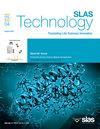Prosthesis repair of oral implants based on artificial intelligenc`e finite element analysis
IF 2.5
4区 医学
Q3 BIOCHEMICAL RESEARCH METHODS
引用次数: 0
Abstract
Dentists often suggest dental implants to replace missing teeth; nevertheless, mechanical issues can develop with these implants, which could lead to prosthesis replacement or repairs. When investigating implant systems' mechanical characteristics and stress distribution, finite element analysis (FEA) is a popular computational tool. In biomechanical investigations, this strategy is widely used. However, traditional FEA methods can be tedious and require expert expertise for accurate simulation and translation of results. To automate and simplify the process of mending oral implant prostheses, the article suggests a new framework called AI-FEA. The three primary parts that make up the suggested AI-FEA framework are 1. An AI-powered model creation module that utilizes data from medical imaging to autonomously construct 3D finite element designs that are unique to each patient. Utilizing deep learning approaches, this module segments and reconstructs three-dimensional geometries from computed tomography (CT) or cone-beam CT data using material properties and boundary conditions. 2. A FEA solver that runs simulations to test the way the implant system handles different loads. This component uses state-of-the-art numerical methods to model the implant and bone interface and determine stress distributions. 3. An AI-based decision support system that takes all that data and recommends the best way to fix the prosthesis. Combining FEA findings with patient-specific variables, this decision support system uses machine learning algorithms educated on an extensive dataset of implant failure instances and repair results to provide the optimal repair strategy. For patients experiencing issues with oral implants, the suggested AI-FEA framework might mean huge time and skill savings in prosthesis repair planning, leading to better, more individualized care.
基于人工智能有限元分析的口腔种植体修复。
牙医经常建议种植牙齿来代替缺失的牙齿;然而,这些植入物可能会产生机械问题,这可能导致假体更换或修复。在研究种植体系统的力学特性和应力分布时,有限元分析(FEA)是一种流行的计算工具。在生物力学研究中,这种策略被广泛使用。然而,传统的有限元分析方法可能是繁琐的,需要专家的专业知识来准确模拟和翻译结果。为了实现口腔种植体修复过程的自动化和简化,本文提出了一种名为AI-FEA的新框架。组成建议的AI-FEA框架的三个主要部分是1;基于人工智能的模型创建模块,利用医学成像数据自主构建每个患者独特的3D有限元设计。该模块利用深度学习方法,利用材料属性和边界条件,从计算机断层扫描(CT)或锥束CT数据中分割和重建三维几何形状。2. 运行模拟以测试植入系统处理不同负载的方式的FEA求解器。该组件使用最先进的数值方法来模拟种植体和骨界面并确定应力分布。3. 这是一个基于人工智能的决策支持系统,它可以收集所有数据,并推荐修复假肢的最佳方法。将FEA结果与患者特定变量相结合,该决策支持系统使用机器学习算法,该算法基于广泛的植入物故障实例和修复结果数据集,以提供最佳修复策略。对于遇到口腔种植体问题的患者,建议的AI-FEA框架可能意味着在修复计划中节省大量时间和技能,从而实现更好,更个性化的护理。
本文章由计算机程序翻译,如有差异,请以英文原文为准。
求助全文
约1分钟内获得全文
求助全文
来源期刊

SLAS Technology
Computer Science-Computer Science Applications
CiteScore
6.30
自引率
7.40%
发文量
47
审稿时长
106 days
期刊介绍:
SLAS Technology emphasizes scientific and technical advances that enable and improve life sciences research and development; drug-delivery; diagnostics; biomedical and molecular imaging; and personalized and precision medicine. This includes high-throughput and other laboratory automation technologies; micro/nanotechnologies; analytical, separation and quantitative techniques; synthetic chemistry and biology; informatics (data analysis, statistics, bio, genomic and chemoinformatics); and more.
 求助内容:
求助内容: 应助结果提醒方式:
应助结果提醒方式:


